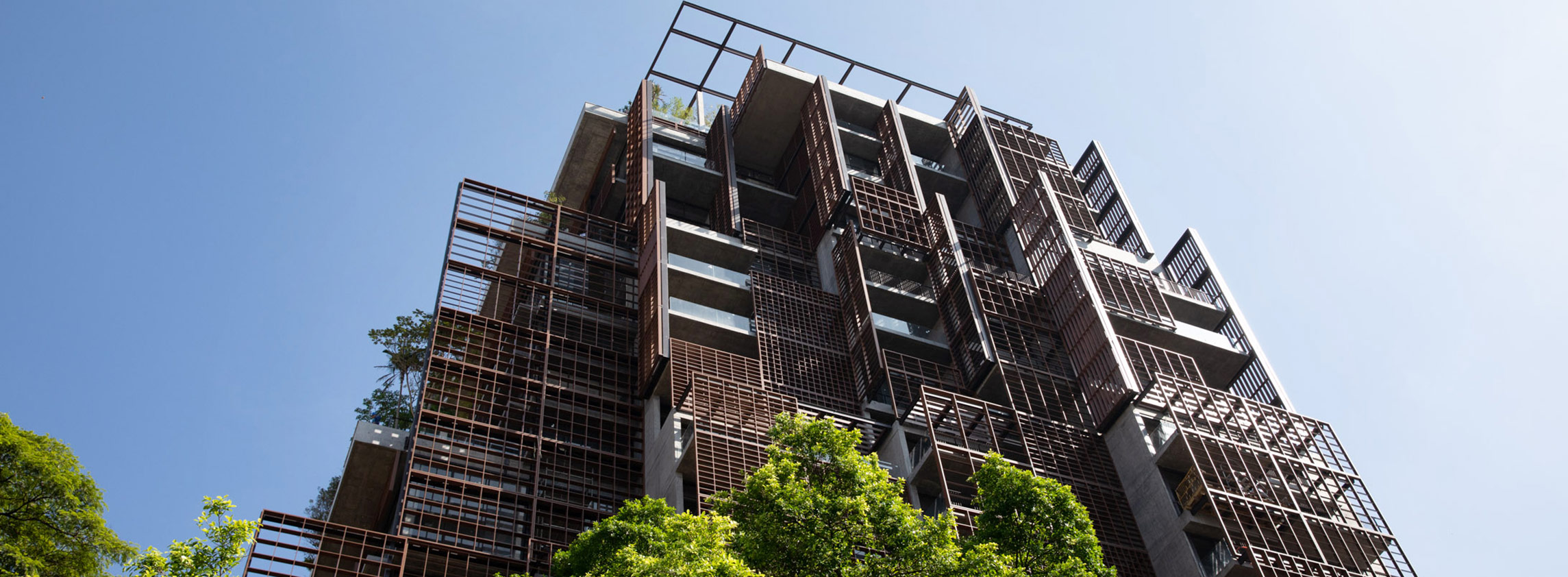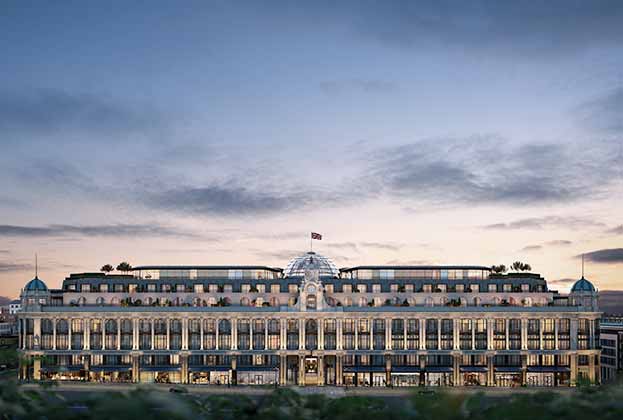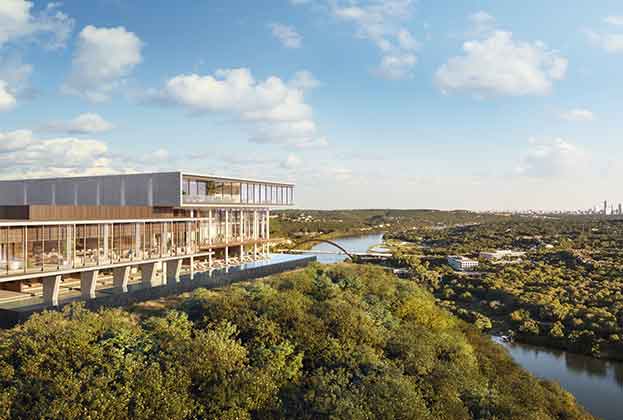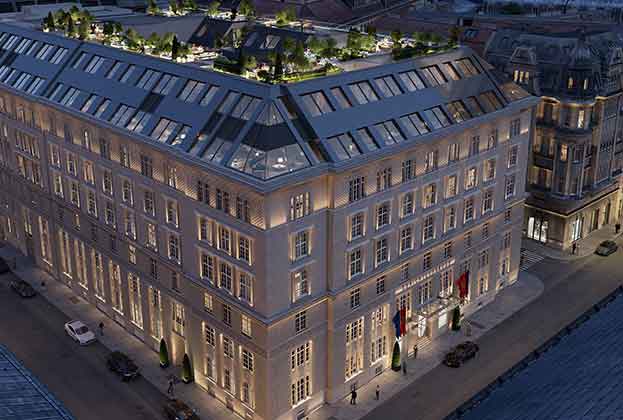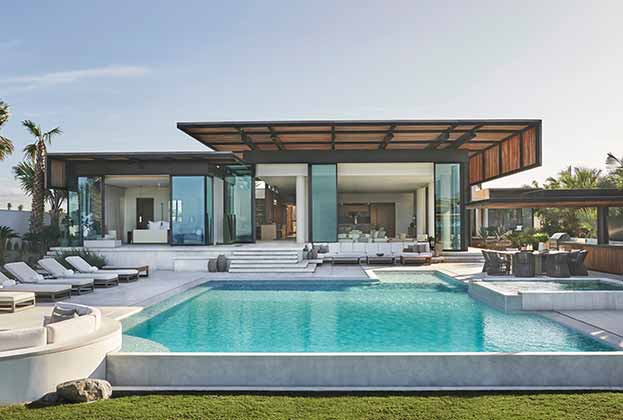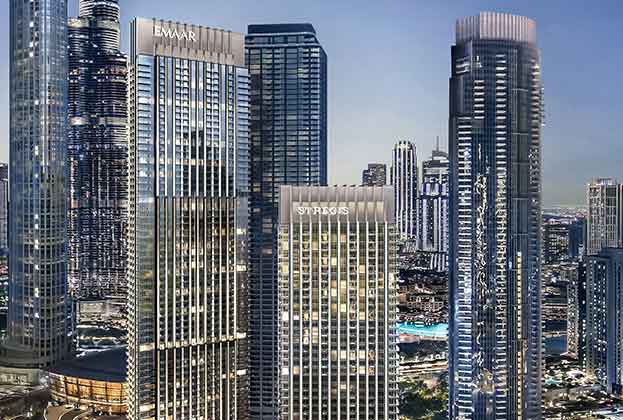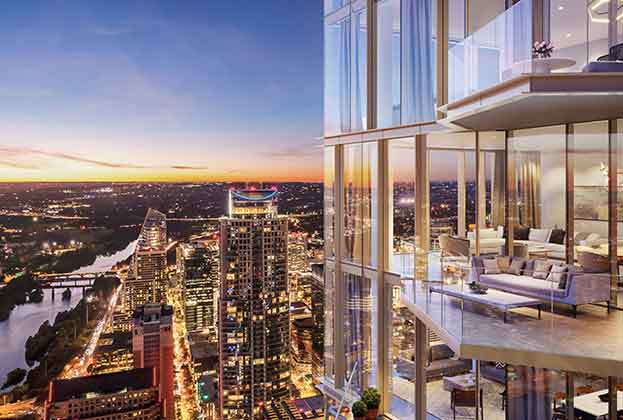Developers see strength, resilience, and future growth in the branded residences sector worldwide
To understand the changing nature and ever-increasing importance of branded residences as a residential property product, Savills World Research spoke to six branded residence developers active in different global regions to get their views and opinions on the strength of the branded residence space and the markets within which they are active.
They all agreed that the strength of the brand creates both consumer and developer confidence, and it is one of the main reasons that the product has shown resilience in adverse market conditions. High-quality service and amenities and the ongoing asset management by the operator offer security to the owners, who use the properties mostly as second homes or part-time residences. They believe that the sector will continue to grow, driven by brand loyalty and lifestyle aspirations.
-
What benefits have you experienced from developing branded residences over non-branded residences?
Jonathan Goldstein: It is exciting developing properties at this level as we have the opportunity to cater to evolving needs, which allows us to focus on a wider variety of life-enriching facilities. Choosing the right operator is extremely important in ensuring a benefit to both ourselves as the developer and the end-user. Working with Six Senses has been amazing in that we can offer our buyers an authentic, conscious experience rooted in the strongest values that are becoming the forefront of all developments nowadays in terms of personal health, wellbeing and sustaining the natural environment.
Jason Turnbull: We are proud to be the pioneer of urban branded residences in Vietnam. We see multiple benefits of establishing this sector in Vietnam, from leveraging prime locations at major cities to catering to demand for international standard of luxury living. The HNWI population in Vietnam has expanded by 86% in the last five years. Branded residences has set a new benchmark for luxury living with lifestyle endorsed by world-renowned brands like The Ritz-Carlton, JW Marriott and Marriott, which attracts and creates a community of global elites.
During challenging economic times consumers will be looking at resilient assets with enduring value, which is one of the advantages of branded residences.
Kappner Clark: There has been an amazing amount of confidence from clients in branded residences. People appreciate how turnkey and easy it is for them, and some have not considered these properties before. This also gives confidence to the developer and especially to a public listed company.
-
How (if at all) are branded residences more resilient vs non-branded residences in adverse market conditions?
Jonathan Goldstein: Having a well-known brand above the door immediately creates trust and confidence in the eyes of buyers, who can take comfort in knowing that an exceptional level of service, interior fit-out, amenities and a strong investment are guaranteed. The very fact that there is so much trust in the brand meant that our buyers were still willing to make significant investments because they knew the product would meet their expectations without having to physically see it.
Kappner Clark: We believe that it is a more resilient product. Even during the pandemic, it gave confidence to owners that the property is being looked-after 24/7. Being active in the luxury and ultra-luxury segment also ensured a higher level of resilience because it bounced back faster post-pandemic compared to lower chain scale product.
-
What is your typical buyer profile of a branded residence?
Jonathan Genton: In my experience, generally, buyers buy for lifestyle. There are zero buyers for primary homes in my schemes currently. Especially in LA, it is a lifestyle choice and normally a secondary residence for users that, for various reasons, want to be in the city. This includes international buyers from Europe and HK, and then US domestic buyers. We see that they all tend to be highly entrepreneurial, innovative, lifestyle-driven buyers. There are also local buyers from a 30–40-mile radius that buy for second homes seeking security, services, etc.
Charlie Walsh: Our client profile is very mixed: buyers from late 20s to early 30s from the world of tech through to buyers thinking about early retirement who want to be close to the cultural attractions of London. The key source markets are firstly buyers from the UK, followed by Americans, who appreciate the heritage of the Old War Office building. They are familiar with the Raffles brand and that it is part of Accor’s illustrious collection of high-end brands. We are attracting a younger audience, and this young generation is experiential-led, so London and the site will offer that.
Josep-Maria Farre Viader: Clients can tell quality when they see it. Again, this is quality in the real estate project, things such as location, design, execution, plus the future operation of the property and its services. In our case in Barcelona, most units are acquired by owners who plan to use the apartment themselves, albeit as a second or third or fourth residence in our city.
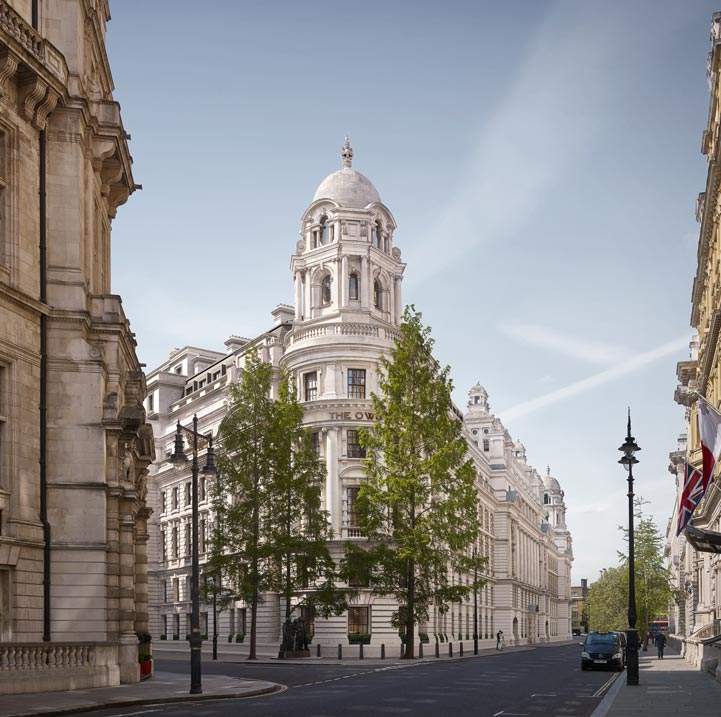
The OWO Residences by Raffles
-
What is this buyer profile expecting in terms of product (e.g., apartment, villa, plot) and configuration, size?
Charlie Walsh: We have various degrees of typologies. Interesting historic features exist in each of the residences. They are very diverse, distinctive and unique, much like a collection of masterpieces.
Buyers are looking for larger spaces. Despite some buyers downsizing, they are looking to travel, but still look for spacious apartments and for unique spaces, whether that is historical features or any sort of characteristic which differentiates their space from other properties on the market. Most buyers have multiple homes. This is their primary home for many of them, while travelling. Buyers are becoming security-conscious, and when previously owning houses, they realise the hassle of maintaining a home and move to branded.
Jonathan Goldstein: Three-bedroom apartments have been our ‘sweet spot’. In a destination such as Courchevel, our apartment complex style has been very popular. In comparison to a private chalet, they are easier for a buyer to maintain, with a ‘lock up and go’ status and within a building that is fully operated and managed all season round. The servicing team is also much larger, with resident access to communal areas and a large spa as well.
Jason Turnbull: Prime location is key. The most sought after products are located on the waterfront and/or in the heart of the CBD within major cities such as Ho Chi Minh City and Hanoi. There's a lot of demand for three and four bedroom apartments which provide extra space for families. Having said that, we also see a lot of interest for 2-bedroom units from young families and couples, as well as buyers that are using the residence as their second home.
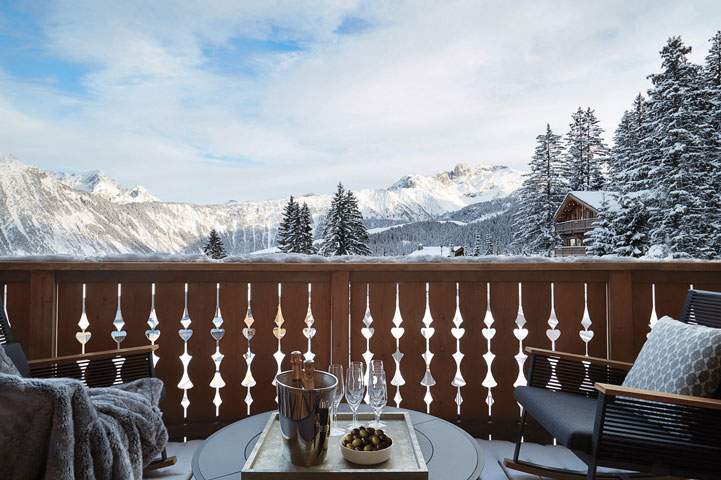
Six Senses Residences, Courchevel
-
What amenities are your buyers expecting? Have certain amenities become less desired?
Jonathan Genton: Buyers are looking for security, service, support – intangible amenities more than tangible, physical amenities. They are also looking for authenticity and craftsmanship of the experience – sometimes this ethos becomes disruptive to brands, which are traditionally hospitality-led. Innovation is required and it is about the culture and the service model of the brand and where they place their emphasis which really attracts buyers.
Kappner Clark: Buyers are looking for unique experiences that they cannot find elsewhere. We find that the benefit of branded residences is that the hotel brand provides special amenities and high-level service; the buyers receive five-star service that accompanies their home. Privacy is a major priority, as well as access to nature and the beach. That access to nature became more important during the pandemic. Clients are also looking for a product which is easily accessible but far enough away from others for privacy.
Jonathan Goldstein: We never let ourselves get too comfortable and are always working to change and adapt the amenities on offer. We work hard to balance the space we have available between rental guests and owners, and another example of this is our recent removal of the owner’s Club Lounge, as we found it wasn’t in demand. Instead, we transformed it into a contemporary sushi restaurant and engaged a world-famous brand to run it, bringing in new footfall to the development.
-
Do buyers have expectations regarding the environmental performance of the product?
Kappner Clark: It is rare if buyers do not ask about the environmental credentials of the product. Most are savvy, discerning buyers who have the buying power to acquire anywhere. So, we need to offer top quality, environmentally sensitive product.
Johnathan Genton: You need to be regenerative, not just sustainable. There is a place for clean air, clean water, clean food, clean thoughts in the schemes. We need to have regenerative ideas, people and places, all wrapped in a brand.
Buyers are interested in what they breathe, what they eat, and that they live in buildings that do not make them sick. Some buyers are more aware and demanding than others. Many are looking for access to high-quality water and food and meaningful exercise, so it is not only aspirational but meaningful as well.
Josep-Maria Farre Viader: This is now definitely a ’must’. Clients expect excellence in your project, and your project cannot cut corners in terms of ESG, and environmental is part of this: your project must be exemplary if you claim to differentiate by quality.
-
How do you expect branded residences as a sector to evolve over the next five years?
Jason Turnbull: We are expecting strong growth in Asia and especially in Vietnam, especially in urban and resort areas. The high net worth population in Vietnam is growing at an impressive rate, and as a result is driving demand for world-class services and amenities which is synonymous with luxury brands likes The Ritz-Carlton and JW Marriott. We also anticipate more international buyers in Vietnam as the world is reopening and branded residences prove to be a safe and resilient asset.
Charlie Walsh: There is an amazing level of brand loyalty between younger generations. It is likely that there will continue to be the creation of cool brands based on a strong element that The OWO and Raffles brand is a market leader of. Sustainability, service quality, etc. will all continue to dominate and drive the space forward.
Kappner Clark: We expect a lot more inventory in line with the increase of demand. Brands have strong pipelines. We also expect continued rising demand from American buyers for Mexico, Europe, and other regions, especially due to the strength of the dollar.
Josep-Maria Farre Viader: I expect this sector will expand overall. A real estate project can be branded by its developer, if it is well known in its market, or by a hotel group. Other brands are less obvious, like interior design or furniture brands, or even car brands. These are all wonderful brands, but I find most interesting the ’hotel branded residences’. However, I think there is a risk many brands will fail to deliver or even be hurt in excessive ’brand extensions’.
Jonathan Goldstein: We predict that we will see lots more non-hotel brands entering the sector –there are many already – meaning all brands will have to elevate their offering to compete, and hotel brands will dominate less and less. In terms of geography, branded residences are reaching more parts of the world and increasing in supply in already established regions.
We predict that this will continue, especially with economically growing regions such as the Middle East. In terms of lifestyle, we are expecting the rise in community living to strengthen, with wellness and walkable amenities becoming increasingly important. Resultingly, we expect secondary homes with access to these preferences to be used more frequently as a result of the new hybrid working model.
Jonathan Genton: It is likely that we will start to see more horizontal community rather than a project separate and apart from the surrounding area. There will also be different varieties of housing and lifestyle, for example, single family homes and a tower of apartments.
Personally, I want to see a brand which is forward-thinking on wellness. Some players in the sector may need to exit because they expanded too fast. The sector as a whole should continue to grow. Brands should not over-exploit themselves.
Read the articles within Spotlight: Branded Residences below.
Further information
Global Residential Development Consultancy
